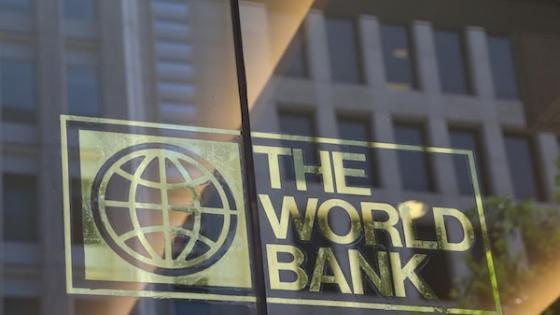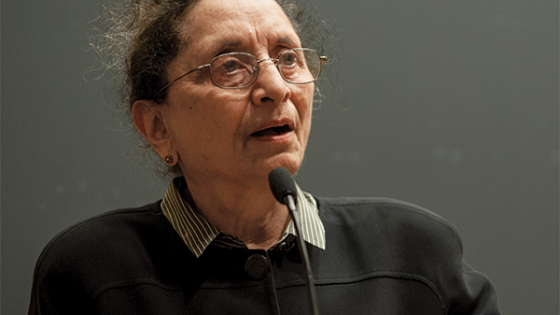“Pity the World Bank. Challenged by other lenders in its key role of providing finance to developing countries, it is battling for legitimacy as it tries to reflect the rising influence of emerging markets and grappling with discontent among its staff. On top of this comes hostility from the administration of Donald Trump, who has threatened to cut the US funding contribution. The response of Jim Yong Kim, the bank’s president, appears to be to put bank services at Mr Trump’s disposal. He has offered to set up and administer a fund for women’s entrepreneurship championed by Ivanka Trump, the US president’s daughter, and offered to provide expertise for Mr Trump’s planned infrastructure plan.” (Financial Times, 31 May 2017).
The Financial Times has picked up on the short-term quandary of the World Bank’s president on how to say “no” to the daughter of the US president. But it also hints at existential threats to the institution as its raison d’etre is questioned, three quarters of century after its creation by John Maynard Keynes and Harry Dexter White at the Bretton Woods Conference in 1944. In fact, while Trump himself is a cause for concern for the integrity of the World Bank, it is the era in which we now live which is undermining the rationale of the institution’s basic design and structure as a response to global problems. How different from the vision of those who were “present at the creation”!1
The International Bank for Reconstruction and Development (IBRD) emerged out of the deliberations of ‘Commission II’ at Bretton Woods, chaired by Keynes.2 In his opening remarks as Chair, Keynes set out the key modality of the institution, and highlighted the main innovation in its design:
“In the dangerous and precarious days which lie ahead… [t]he risk premium reckoned on strict commercial principles may be beyond the capacity of an impoverished borrower to meet, and may itself contribute to risks of ultimate default… The proposal is, therefore, that all the member countries should share the risk in proportions which correspond to their capacity. The guarantees will be joint and several, up to the limit of any members’ subscription, so that the failure of any member to implement his guarantee will not injuriously affect the lender… I fancy that the underlying conception of a joint and several guarantee of all the member countries throughout the world… may be a contribution of fundamental value…” (Keynes 1944: 74-75).
The contribution of the Word Bank to the dramatic post-war recovery is a testament to the success of the Keynesian design. The basic model of sovereign lending was subsequently adopted throughout the world. Regional Development Banks were founded from the late 1950s onwards, supplemented by sub-regional entities. Most recently, the Asian Infrastructure Investment Bank (AIIB) led by China was launched in 2014, and the New Development Bank (NDB) was launched by Brazil, Russia, India, China, and South Africa (the BRICS countries) in 2015. As a result, the World Bank is now decidedly not the only game in town in providing development finance. In the last decade, the World Bank received relatively meagre capital increases compared to these regional and sub-regional entities.3
What, then, is the World Bank good for in the next quarter century? What role would John Maynard Keynes and Harry Dexter White assign to a global development institution in a world in which there already was a plethora of institutions addressing flows of funds to individual countries for investment? The answer has to be: issues which are truly global in scope, issues which cut not just across countries but across regions of the world as well. It is these issues which cannot be satisfactorily addressed by the proliferation of regional institutions, nor indeed by non-governmental institutions, nor of course by private capital flows. In other words, global public goods. But what does the theory of global public goods tell us about the division of labour in their supply (Kaul et al. 2016, Kanbur 2017)?
There are many externalities and spillovers across sovereign nation states. Four obvious ones are financial contagion, infectious diseases, climate change, and migration. But another important aspect of these spillovers is their reach and spread. Many are restricted to a contained number of contiguous nation states. For example, riparian rights across countries sharing river basins and water tables, or when forest cover or wildlife movements stretch across borders, or when conflict in one country leads to refugee flows only to a neighbouring country. There are conflicting tradeoffs in designing mechanisms and institutions to address these cross-border externalities. And it is these mechanisms and institutions which are the public goods – they have elements of non-rivalry and non-excludability, to use the textbook definition, and thus face the problem of underinvestment by the world as a whole.
Of course, mechanisms and institutions are not costless. There are large fixed costs of setting up institutions, which suggests a small number of institutions. But how many and of what type? The principle of subsidiarity suggests a split between regional institutions for within-region spillovers, and global institutions for spillovers, which are global in the sense that they encompass countries from across regions. Thus, for a global institution like the World Bank, the rationale for involvement in cross-border externalities cannot simply be that they exist, but that they are global and cross-regional in nature.
However, global public goods bring up another fundamental question – the suitability of the World Bank’s signature instrument, the sovereign loan, for financing global public good mechanisms. The host of truly global cross-border issues which face our globalised world require a global response. Yet the implementation of these responses will have to be at the country level in a world which is still Westphalian in its structure, and likely to remain so into the foreseeable future. We thus need responses which will entail specific concentrated short-term costs on some countries, with the promise of more diffuse long-term gains for all.
This is a classic coordination problem for which the World Bank’s standard instrument, the sovereign loan, is highly unsuited. Loans, and their repayment, require specification of who receives the loan and who repays, but the benefits of addressing cross-border issues, while they may be large in aggregate, cannot be attributed quite so easily to individual parties. Of course, various methods such as apex loans to joint entities can be and have been tried. But they cannot fully overcome the basic design problem.4 For these reasons, a grant instrument is more suitable than the World Bank’s classic sovereign loan, which proved so successful in addressing the problems of 1944. This is recognised in a recent Center for Global Development (2016) report which proposes a new grant financing window for the World Bank alone of $10 billion annually.
Beyond the standard global public goods there is, in particular, one for which the international community already relies on the World Bank, and which the World Bank could do more of. Global public goods are contentious issues and it is not easy to arrive at a global consensus on the way forward, in general and in specifics. But the development of global consensus is itself a global public good. It is surely global, and a consensus is non-rival and non-excludable.
For example, Sustainable Development Goal 1.1 is to eliminate extreme poverty. But who is to define extreme poverty? Who is to collect, collate, and manage the data to monitor this global goal? Who is to develop and maintain global consensus on these seemingly technical, but often starkly political questions? The recent report of the Atkinson Commission on measurement of global poverty, commissioned by the World Bank, is an example of a consensus-building exercise (Atkinson 2016).5 It is a significant contribution to an underappreciated global public good.
Consensus building of this type has two prerequisites: technical excellence, and actual and perceived independence. But the governance structure of the World Bank mitigates against perceived and perhaps actual independence of consensus-building exercises. If a new Bretton Woods conference were to be held today, it is unlikely that it would be dominated by just two names – Keynes and White – simply because the economic weights of other countries are now much more significant. For the same reason, an institution which purports to address cross-border issues which span the globe will need adequate representation from across the globe reflecting economic and political weights of our time.
The reality of the current capital increase impasse at the World Bank is also clear. The US is unwilling to put significantly more money of its own towards a capital increase. But it is also unwilling for others to put more money in, lest this dilute its share of capital to below the crucial 15% which gives it a veto. With this impasse, the World Bank will indeed fade into insignificance as global magnitudes pass it by. In the Era of Trump, moreover, veto power in the hands of a government which does not acknowledge global public good issues, as evidenced by the withdrawal of the US from the Paris accord, is potentially lethal for perceived and actual independence in consensus building.
The World Bank thus faces existential threats to its survival not simply because of the Era of Trump, but because of the era in which we live. It is an institution whose key instrument has been replicated successfully to the point of increasing irrelevance of the originating institution. At the same time, this instrument cannot easily address the global public good issues that other institutions cannot because they are not global institutions. The world needs global institutions to deliver global public goods. For this the World Bank needs greatly expanded grant instruments. But this global institution also needs a transition to legitimacy in the world as it is, not the world as it was 75 years ago. The Era of Trump simply makes that transition much, much more difficult.
References
Acheson, D (1969), Present at the Creation: My Years in the State Department. W.W. Norton.
Atkinson, A B (2016), Monitoring Global Poverty: Report of the Commission on Global Poverty. The World Bank.
Center for Global Development (2016), High Level Panel on the Future of Multilateral Development Banking.
Financial Times (2017), “The World Bank’s dealings with Trump: The institution should not trade personal favours for US funding”, 31 May.
Kanbur, R (2017), “What’s the World Bank Good For? Global Public Goods and Global Institutions.”
Kaul, I, D Blondin and N Nahtigal (2016), “Understanding Global Public Goods: Where We Stand and Where to Next“, in I Kaul (ed.), Global Public Goods, Edward Elgar
Keynes, J M (1944), Activities 1941-1946: Shaping the Post-War World. Bretton Woods. Vol. XXVI of The Collected Works of John Maynard Keynes, Royal Economic Society, MacMillan.
Endnotes
[1] The phrase is, of course, that of Acheson (1969).
[2] ‘Commission I’ on what became the IMF was chaired by Keynes’s American counterpart White, the numbering of the Commissions reflecting the relative importance accorded to the two sets of issues, and the chairing reflecting the relative importance of the US and the UK in the emerging world order.
[3] And this does not of course take into account the burgeoning of private capital flows.
[4] It is indeed a high irony that the “joint and several” guarantee is itself a public good for the shareholders of the World Bank, with its elements of non-rivalry and non-excludability. The instrument is a global public good, but it cannot address global public good issues!
[5] The author of this column was a Core Member of the Commission.



